With all my discussion of everything else, I have failed to do any reasonable update about the homestead in the last few months. So here’s an update of what’s happening around the homestead!
The Druid’s Organic Vegetable Garden: Veggies, Pests, and Interplanting
One of the things I’m learning about organic gardening is that each year, the challenges of pests are quite different and basing this year’s garden on last year’s successes and tribulations isn’t always a sure bet. My first year, I had potato beetles and hundreds of potato beetles that I had to hand pick and feed to my peeps. The next year, it was the year of the squash bug and borer; I lost nearly all of my squash and zucchini crops to them (the only squash I got came up in my compost pile!). Then it was blight and wilt the 3rd year. This year, it is the year of the slug. Slugs took out a good 25% of my crops before I resorted to buying some OMRI-certified Sluggo (which uses iron phosphate to disrupt the slugs). And Sluggo works, even if I applied it a little too late. I think it’s all the rain and no heat. This lovely pumpkin patch has taken a beating recently, as have most of my squash. Slugs are literally eating the bottoms of the vines, like where they go into the ground. It’s very different than the other kind of bug damage from previous years!
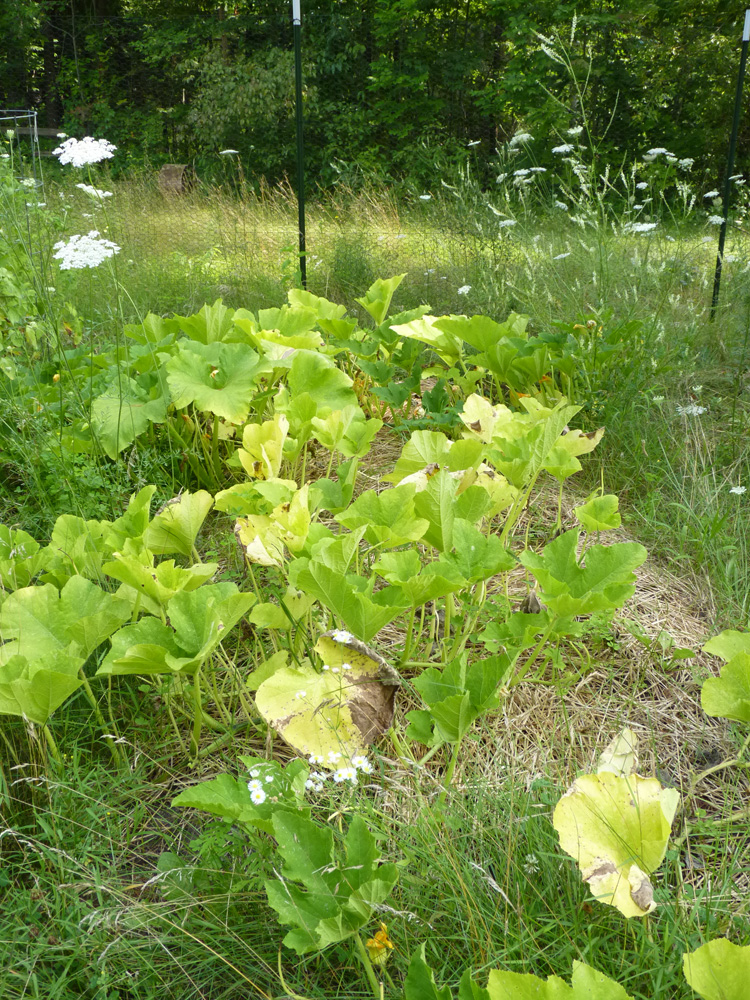
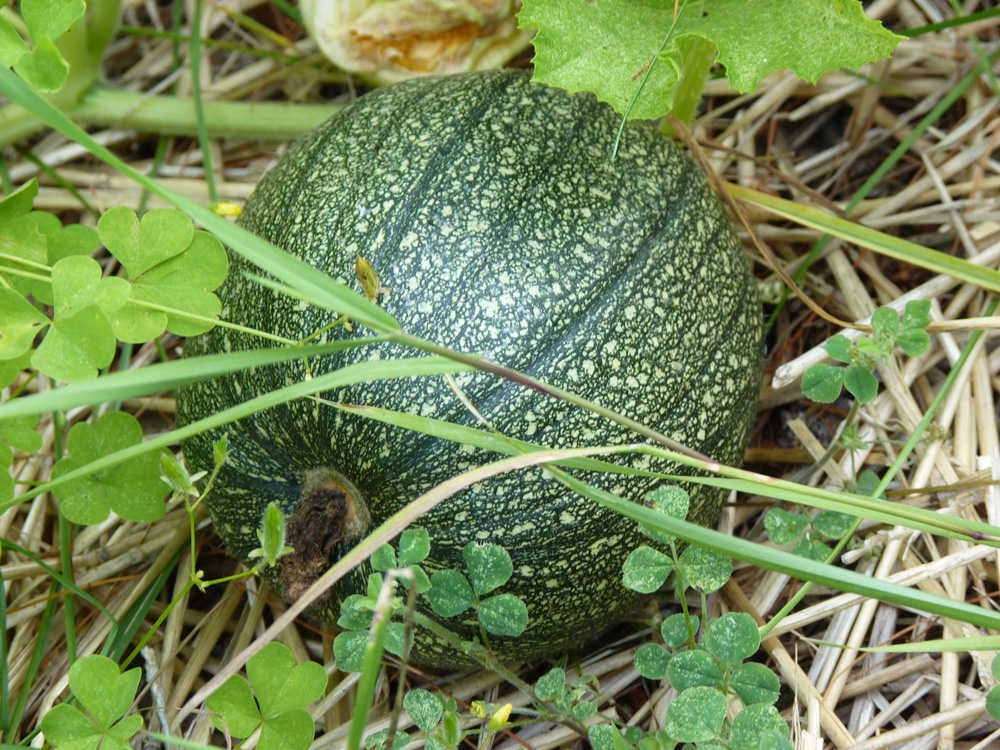
But regardless of this year’s challenge, the garden is going great. I am still working on planting enough that I can harvest fresh and have enough for canning and preservation but yet not too much that I’m getting overwhelmed. This is not an easy task. I have a great bean harvest, but I’ve already canned what I wanted to can, and now I’ll be freezing some because I’m kinda overwhelmed with beans!
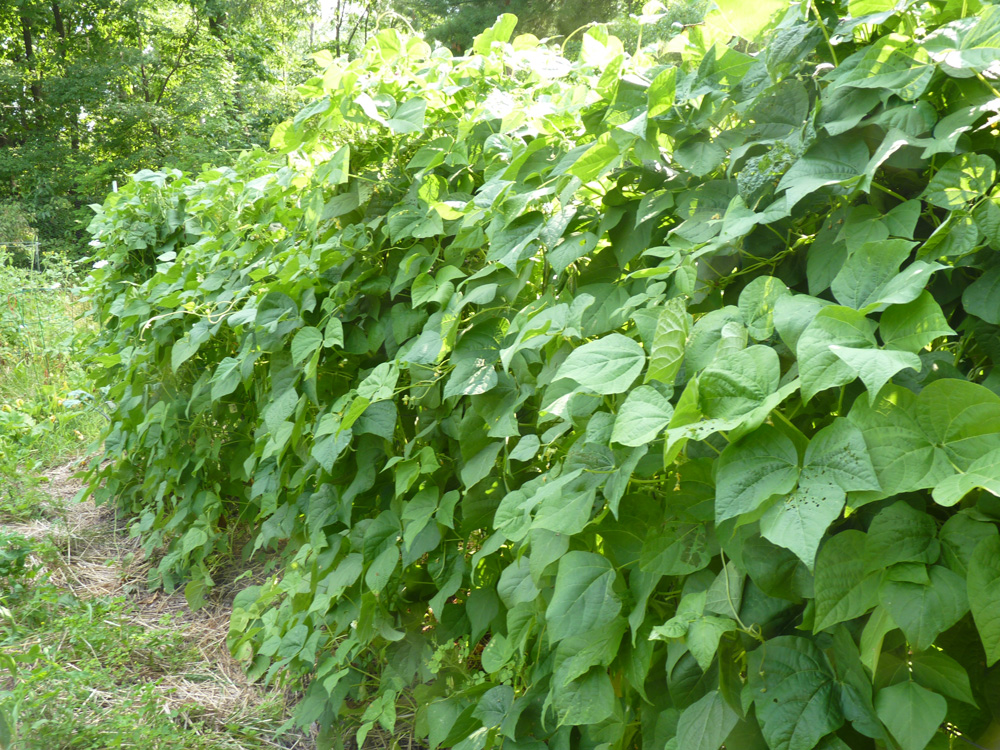
I also planted too many zucchini. I went with three successions of 4 plants each this year, planted at two-week intervals, because the last two years, I didn’t have any at all due to the squash borers. This year though, since the borers are nowhere to be seen (perhaps killed off by the hard winter), I ended up with 12 healthy plants. It worked out well, as I’ve been teaching at a local community organization that has a soup kitchen and free food table, so the extras are going there each week. And I eat zucchini and beans now at least once a day.
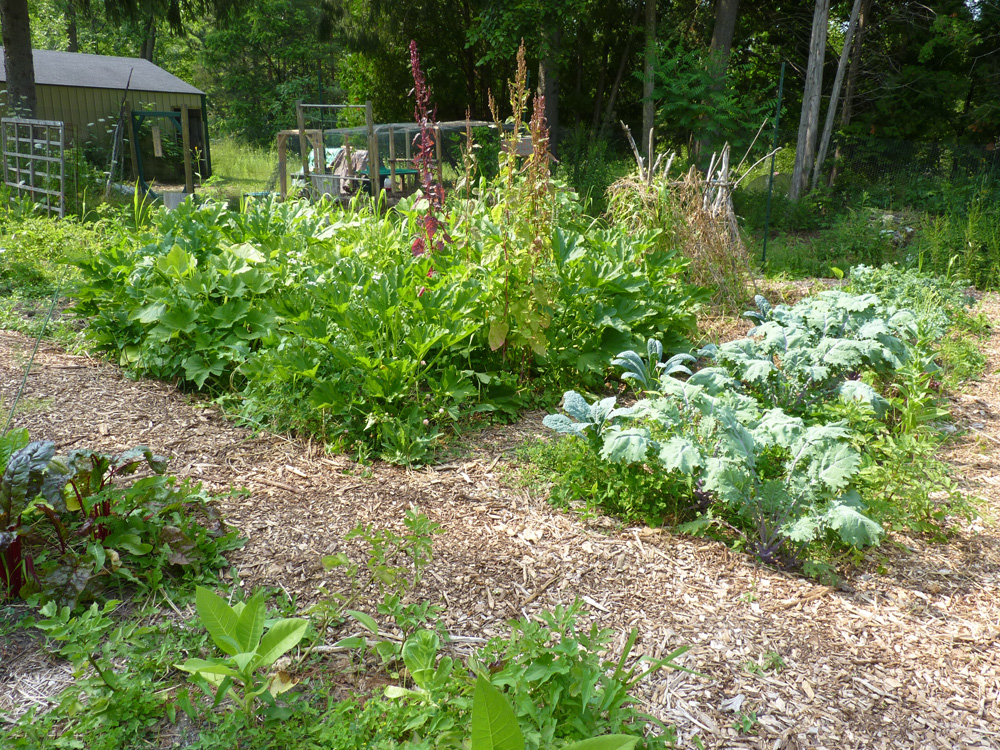
In the photo above, you can also see my row of kale and potatoes on the right (I am experimenting with various interplantings this year). The kale remains one of my absolute favorite crops–it rarely has serious pest damage, it produces for longer than any other crop due to its cold resistance, it is incredibly healthy and tasty and versatile, and it is extremely easy to grow. I consider it one of the best plants for beginner gardeners to start out with! The interplantings also seem to be going well–except that to harvest my potatoes, I need to pull up some kale. So I think in the future I won’t do long, thin rows but blocks of potatoes and kale. Other interplantings were radish and zucchini, carrots and lettuce, and basil and eggplant/peppers/tomatoes. All seem happy.
Another crop that I’ve been super pleased with this year is the three sisters’ garden (another interplanting). Two rows of popcorn, two rows of sweet corn, and one row of beans and squash on the edges of each. I used bush beans this year, and in future years, I would use climbing beans instead because they are starting to get shaded out. The squash are working their way through the beans and corn…everything is very, very happy and abundant and wild, just how I like it! You can see a squash hanging from the corn in the 2nd photo on the right. I am going to add this as a staple in my gardening in the future. The one thing I will say about this interplanting is that it is not early-season planting, so you’ll want to think about adding other things in other parts of the garden that are earlier season, rather than go with all three sisters (which I’ve heard of people doing).

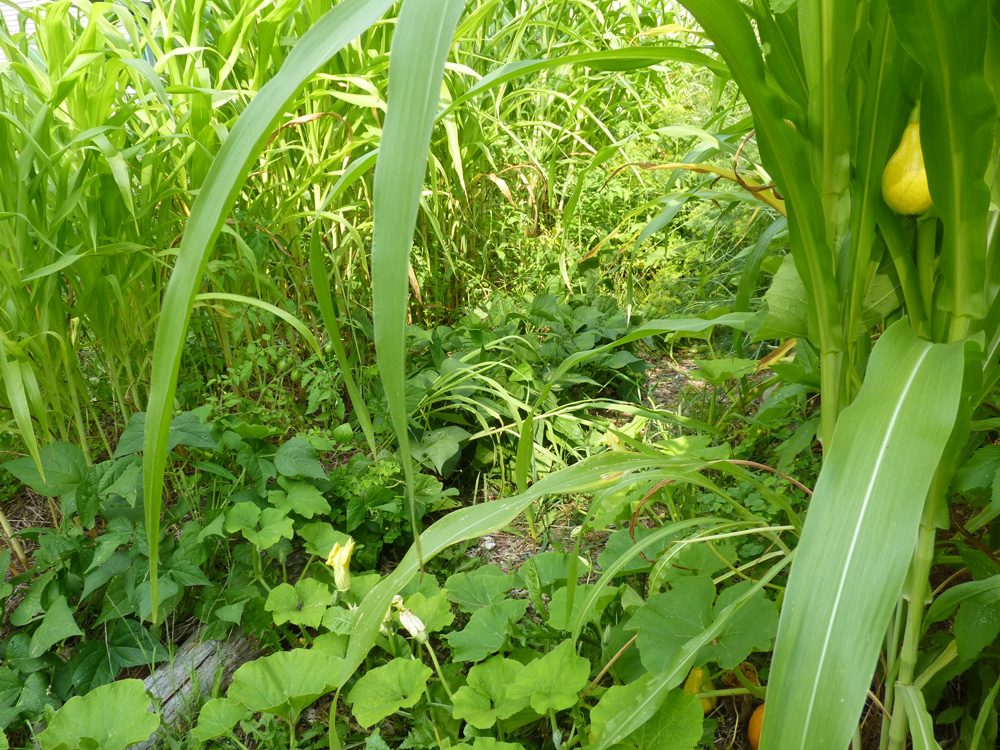
Since it’s been so cold and damp, the celery is also growing really well this year. Interestingly enough, it’s super mild this year (and it was so strong last year, especially after frost, that I could only use a little at a time). I am very much enjoying cooking with the freshest of celery!
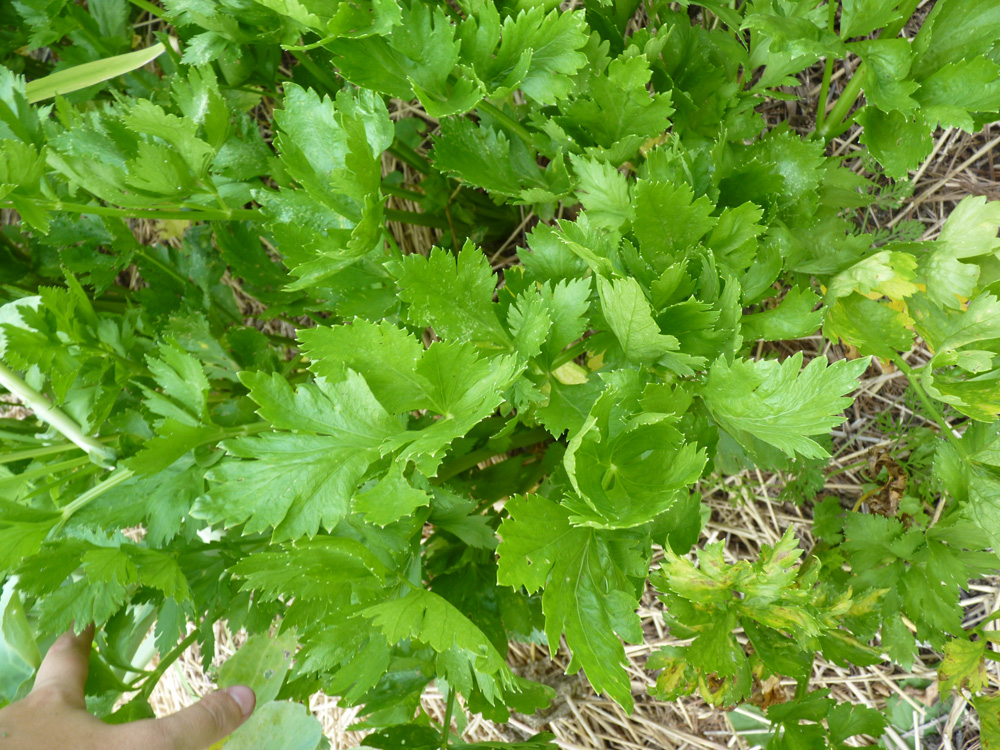
Here are a few other shots of the garden and awesome things growing!
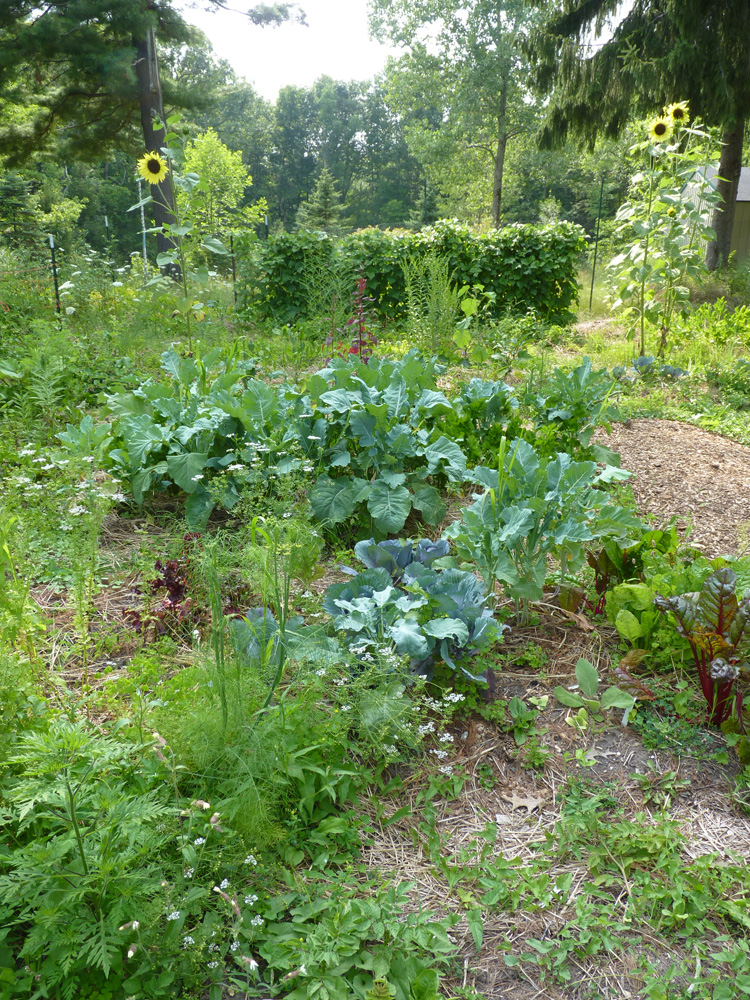
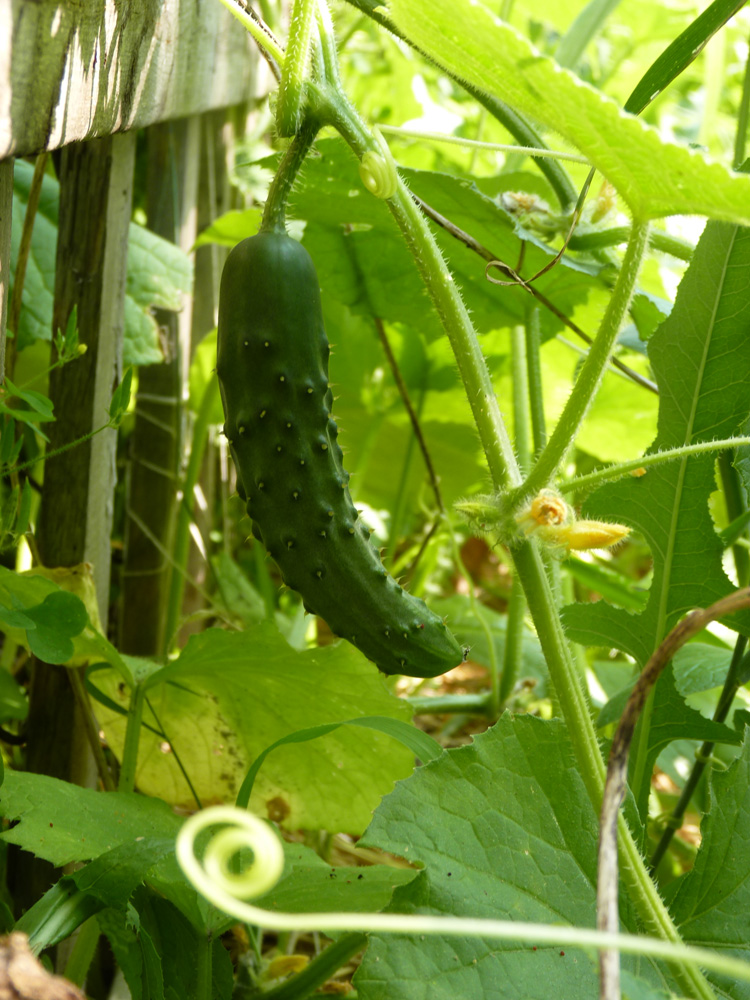
I am growing these cukes an old bedframe–this trellis works great!
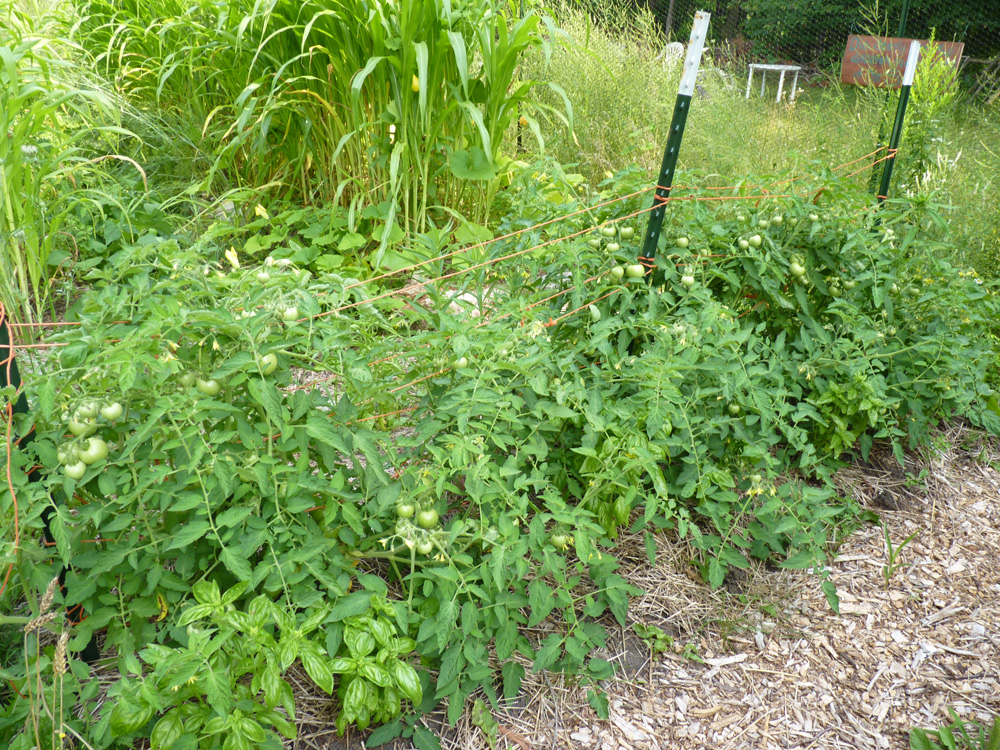
The photo above is of my tomato trellises. I saw this done at another farm last year. I had hoped to use it to trellis tomatoes…I think I needed stronger rope and I needed to be more on top of it than I was. It’s sorta working, but its sorta not. The idea is that you pound in stakes, and then you string rope, and then weave the tomatoes up it. But my tomatoes didn’t want to seem to grow very high up, they prefer instead to go out. So I’m not sure what to do about that. I’ll just be glad to get the tomatoes :).
The Bees
I discussed beekeeping first a few months ago. The bees are enjoying the last major nectar flows of the year–the clover is mostly done for the season, but now the spotted knapweed/star thistle and the goldenrod is coming in. They bees are still quite busy and the hives now have 40,000 to 50,000 bees each, and I have honey supers on both hives. I’m hoping I’ll get at least some honey–and that’s looking likely, although how much it will be is not clear yet. Here’s one of the magical hives–the fourth box (on top) is the super!
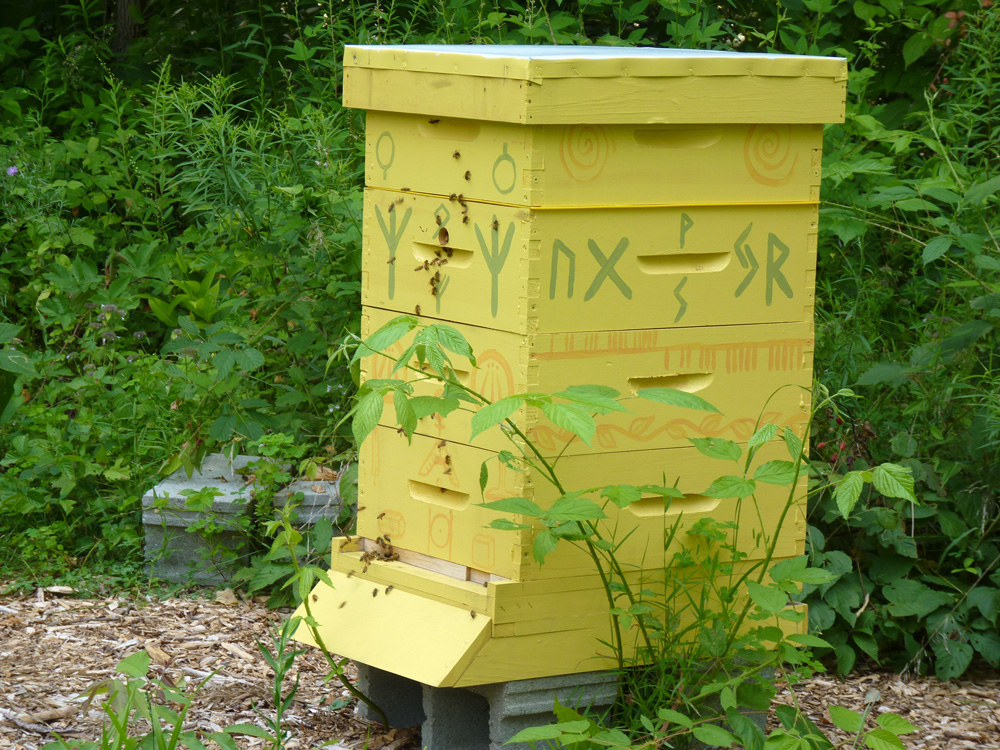
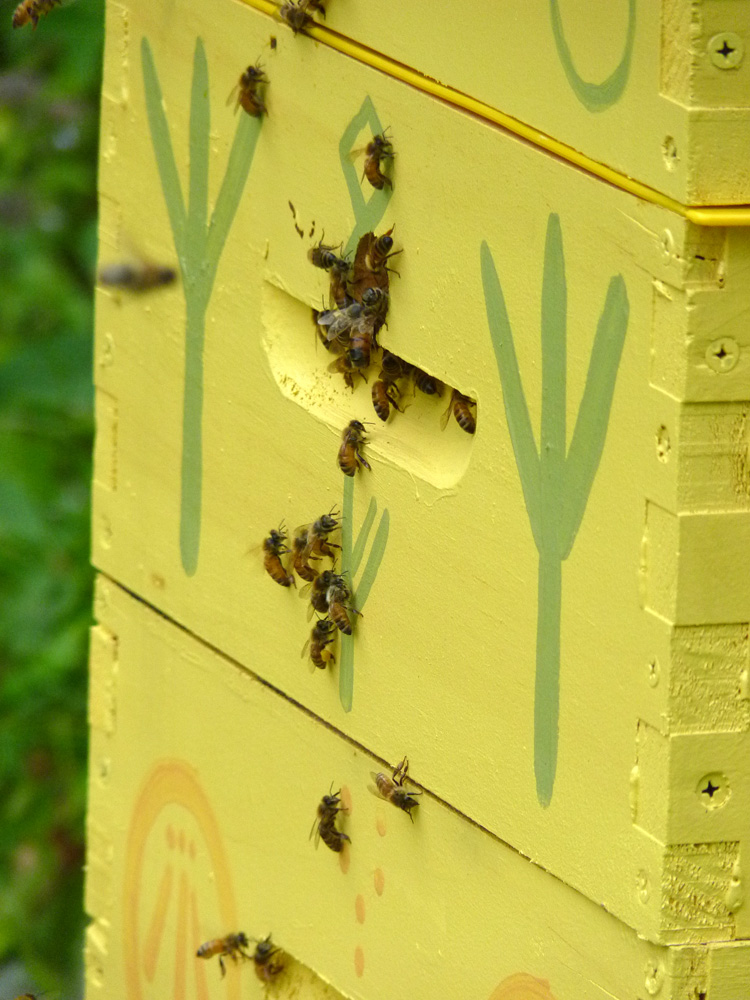
I want to say something about spotted knapweed. It’s one of those plants that people often get upset about, that it’s a ‘terrible invasive.’ I’ve heard of people dumping Monsanto’s Roundup on it to get rid of it…there are so many things wrong with dumping Roundup anywhere for any purpose, in my opinion. I’m working on an extended post on invasive plants and the concept of invasion, but for now, I can say that as a beekeeper and permaculturist, I am happy to see the knapweed growing. It is only growing in highly disturbed soil, so it’s one of those “opportunistic” species; other things grow in those same soils in other parts of the year. In my many forays into the abundant wild fields to gather medicinals and food, I see it thriving in an ecosystem with other plants including St. Johns Wort, Yarrow, Mullein, Milkweed, and Goldenrod. And every time I see it, it’s covered in bees, butterflies, and other things. The beekeepers around here call it “star thistle” and, frankly, it is one of the most delightful tasting honey you will ever enjoy. Not to mention, the plant has medicinal value itself. So while my bees live off of “invasive” star thistle and sweet clover, the hives grow strong.
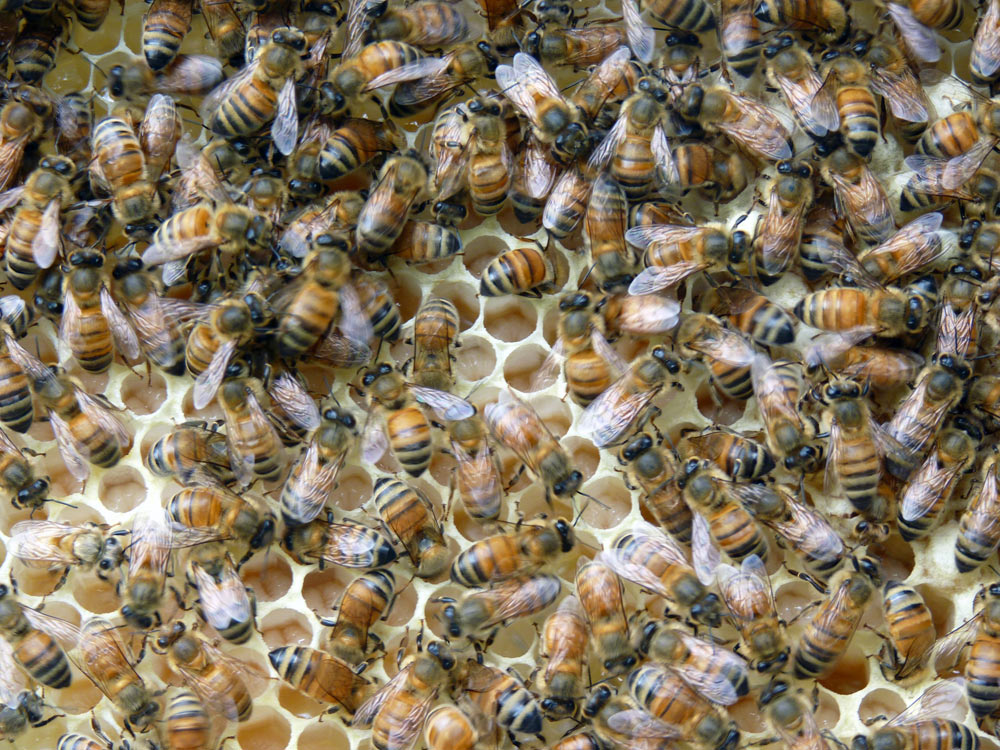
This final bee photo shows the comb where the bees are raising brood. You can see the white larvae in the brood chamber. It takes about 25 days for the egg to turn into larvae, then pupae, and then emerge. I got to witness a pupae emerging when I was doing a hive inspection recently–she chewed her way slowly out of the capped chamber, then turned right around and cleaned out the chamber so a new egg could be laid inside by the queen. The whole thing was amazing and incredible! When you look in the hive, you can see the bees at all stages of growth. The oldest bees are the foragers; they leave the hive to bring back nectar and pollen.
Chickens
I lost a good deal of my chicken flock to a raccoon in December. My magical rooster, Anasazi, managed to survive and he was living at a friend’s house with a friend’s flock for the last six months. In June, right around the solstice, his crowing, which I love, got to be too much for my friends. He needs to bring the sun up every day, so of course, he is going to crow quite a bit! And so I brought him back here and bought one large hen (a rescue) and then have been raising up a bunch of peeps for his flock. You see, one rooster prefers to have about 10-12 hens, so that’s what I’m trying to give him (the things I do for that bird…lol). Two weekends ago, I hosted a permablitz through the Oakland County Permaculture meetup, taught people about raising chickens, and had a bunch of help building an awesome new coop and enclosure for the growing flock. Here’s a photo of the mostly-finished project:
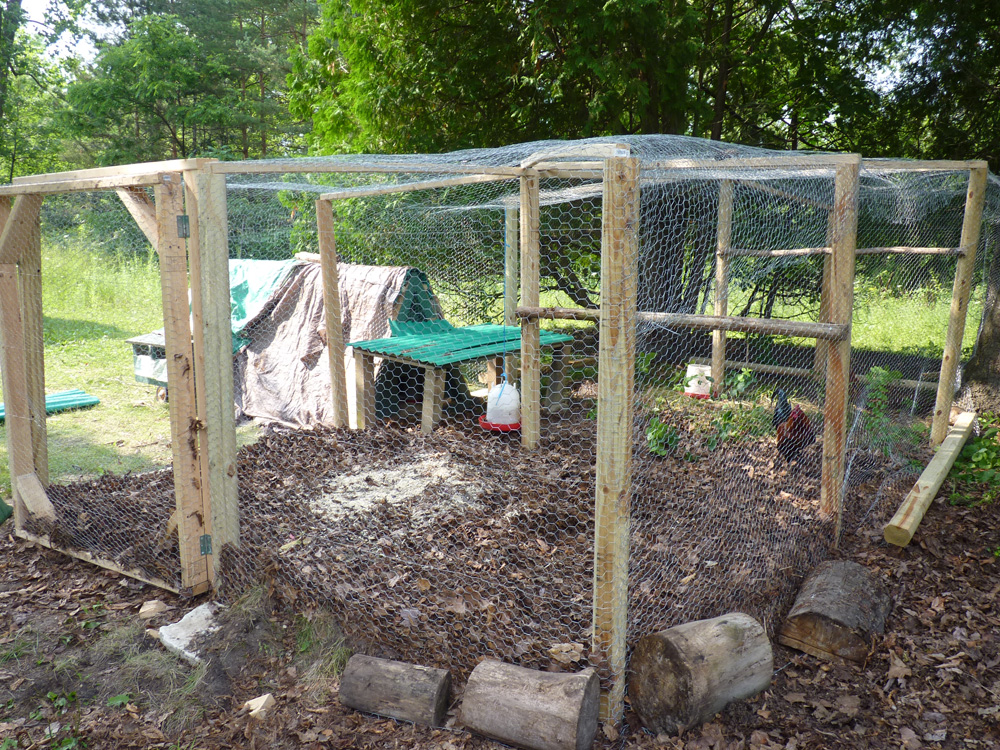
The new little ones arrived in mid-July, and they are growing so fast. Here are a few shots of them from their first week of life!
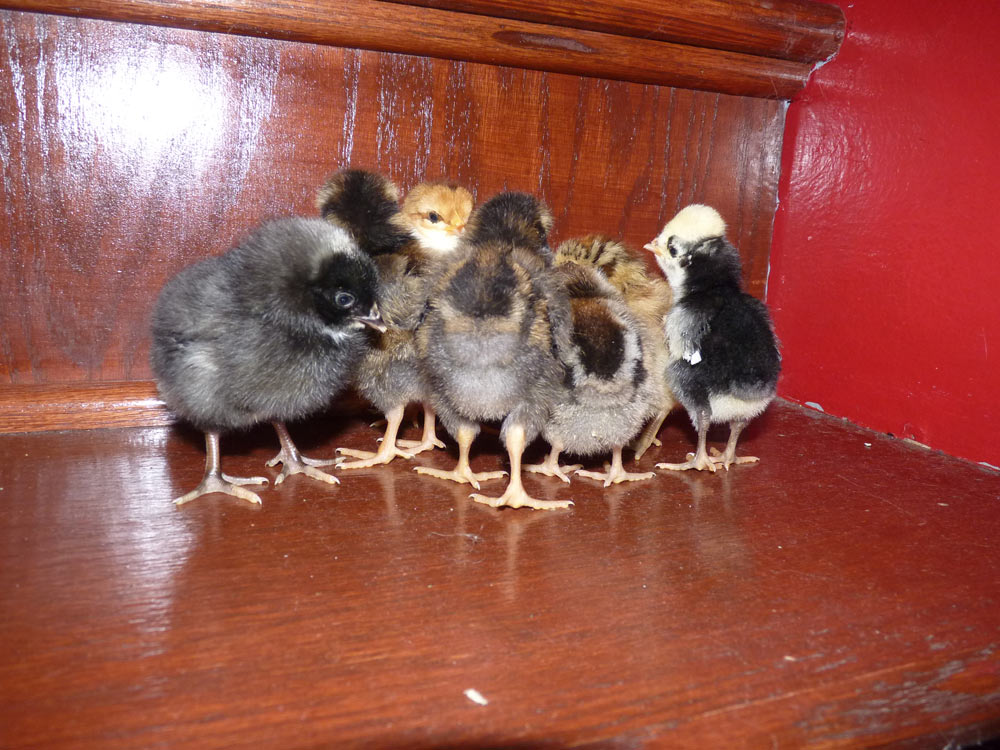
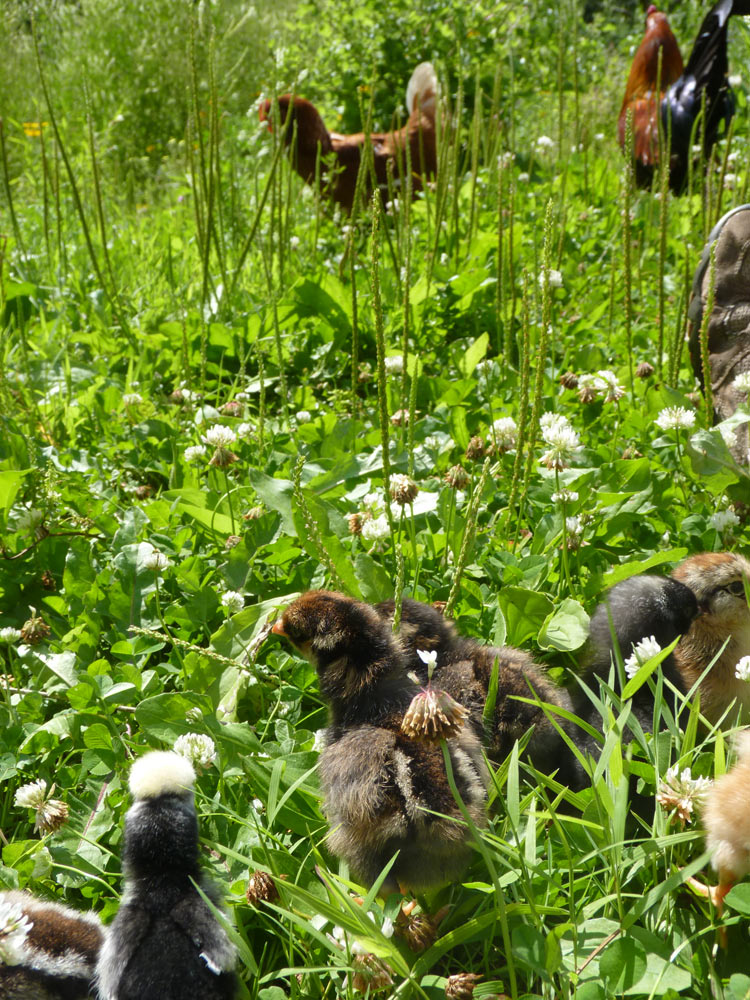
I am raising two adolescent birds as well, who I picked up in early June as peeps. They are “clover” and “dandelion”; and they just joined the two older birds in the main coop. They’ve been getting along well, but the two little ones refuse to go in at night so I have to go out, pick them up, and put them in the coop till they go on their own. The adolescent chickens have, for no reason I can understand, taking a liking to my cat (who, up until a few weeks ago and they got too big, wanted to eat them for dinner).
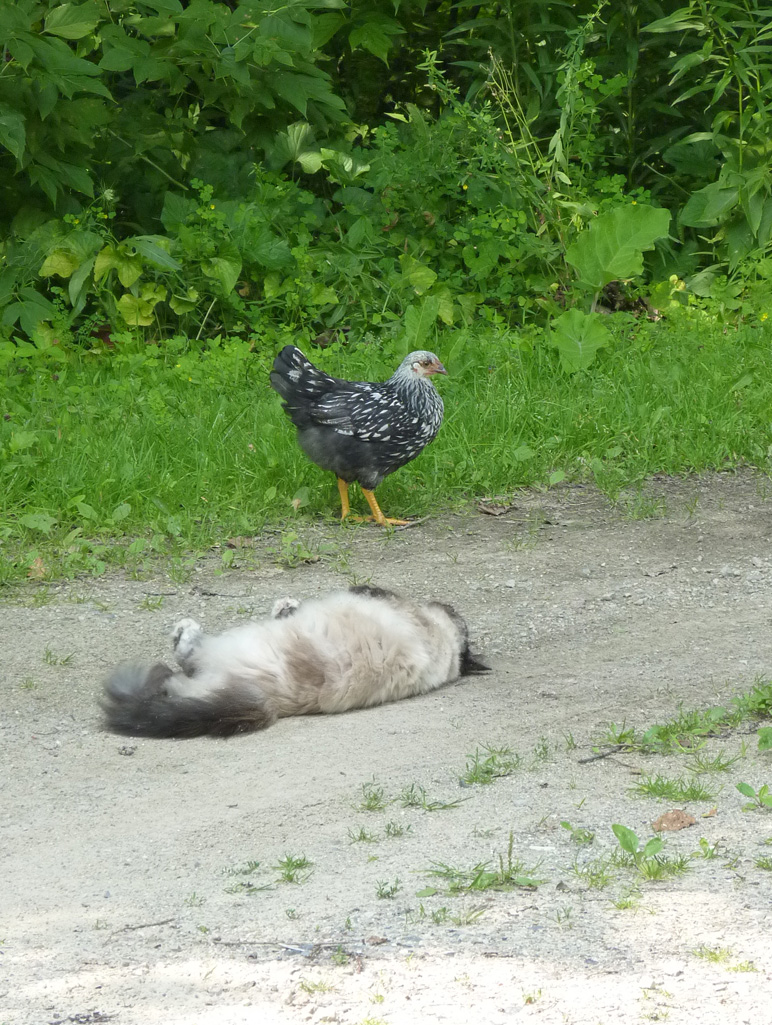
Other Life on the Land
The land is bursting with so much life, so many beautiful herbs and plants, so many sacred tall trees. I am so happy to see monarchs in the yard, hummingbirds, and even a bluebird this week! I’ve been thinking about “if you grow it, they will come” as a philosophy behind the wildlife and butterfly sanctuary. And that truly is what is happening here!
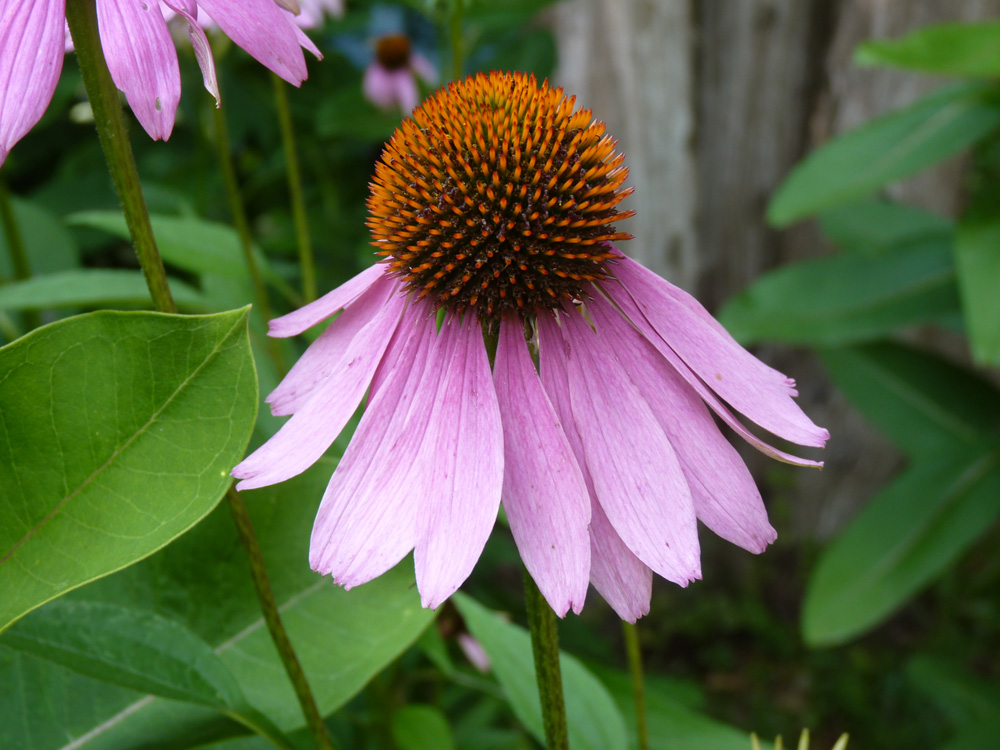
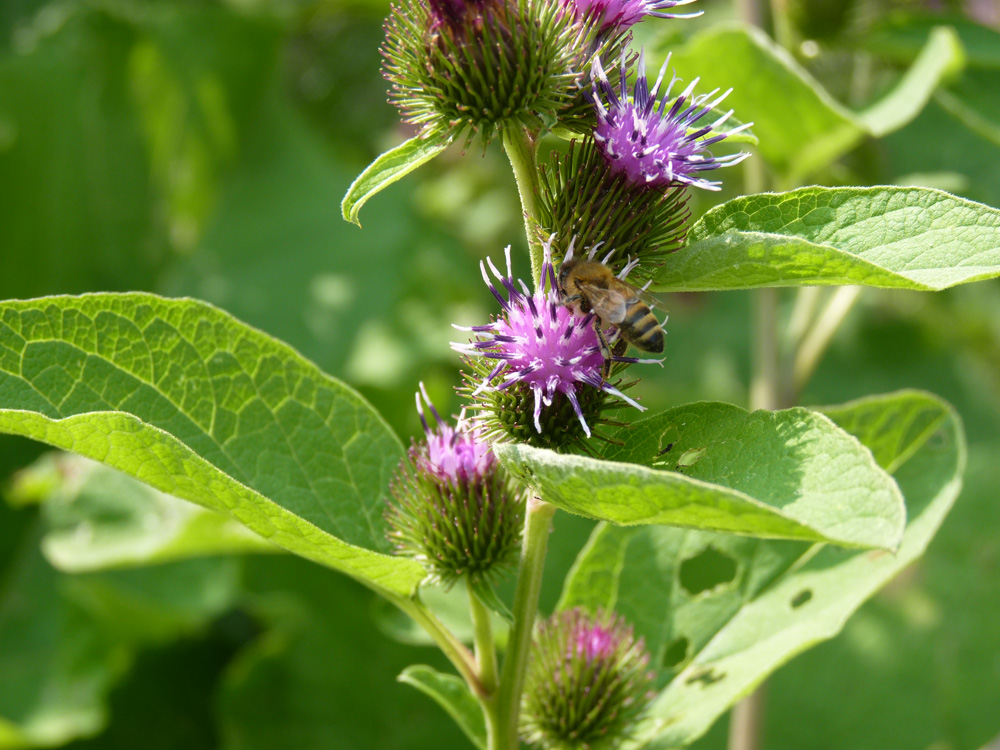
After each of my herb weekends, I come home to discover more medicinal plants growing here. Just yesterday, a friend and I were walking around the property and came across a whole patch of boneset–an herb I had on my “to find” list. And across from the boneset was a crampbark tree! The bounty and beauty of this land amaze me each day, and I feel so honored to call this place my home.
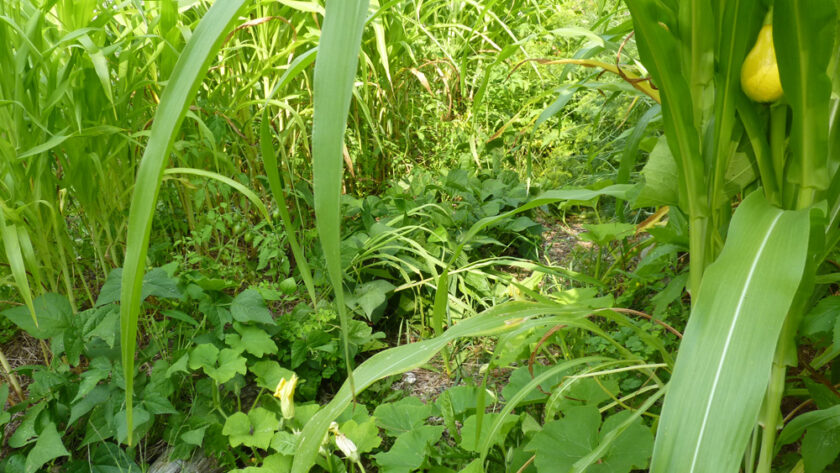
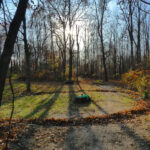

I am a beginner in gardening. I don’t know a lot. I admire your knowledge and willingness to share it. I have heard of a thing called companion planting. Planting certain herbs or spices near to vegetables can deter pests. And also the paper wasp ( unsure if you have them in your part of the world and may not be compatible with bee keeping) eats certain garden bugs. Please keep sharing about your garden. It sounds so affluent with beauty and spirit.
Hi Janet,
There is really good information on companion planting in a few sources, including in Jeavons’ Grow Biointensive book and in a book called “Carrots love Tomatoes.” I used the informaton in these two books to think about companion planting. The paper wasp (and many other small parasitic wasps) do indeed help with garden pests! I keep a “pollenator hedge” around the edge of the garden that has wildflowers and herbs growing to encourage them to be close by :). Thanks for your comment!
Wonderful 🙂